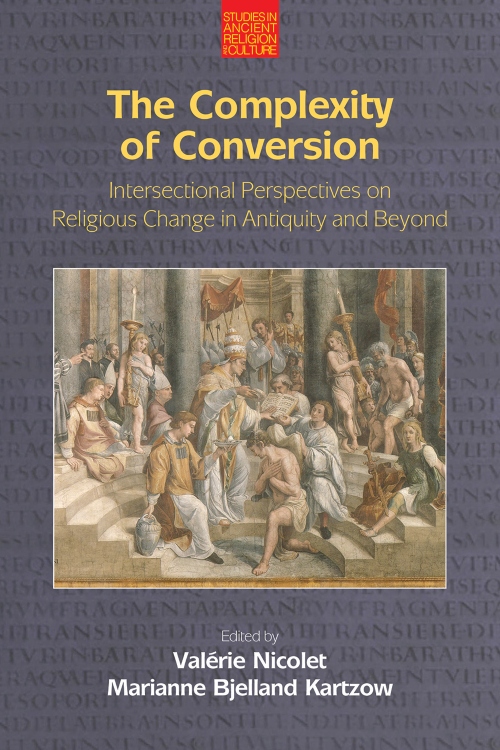The Complexity of Conversion by Valérie Nicolet and Marianne Bjelland Kartzow
Addresses the complexity of conversion, using a range of cases, texts and theories, and initiates a dialogue between ancient sources and present concepts or practices
 The Complexity of Conversion - Intersectional Perspectives on Religious Change in Antiquity and Beyond
The Complexity of Conversion - Intersectional Perspectives on Religious Change in Antiquity and Beyond
Nicolet, Valérie & Marianne Bjelland Kartzow (eds)
Equinox, Sheffield, 2021
ISBN: 9781781795736
Reviewed by Alec Gilmore
Time was when you could assume that ‘conversion’ was to Christianity . . . from atheism, agnosticism or infidelity. Not any longer. Thanks to refugees, immigration, general population movements and cultural diversity, conversion today is more likely to be a matter of switching from one faith to another, and though mostly relating to religious experience, may equally be political or personal (and private). Nicolet and Kartzow and colleagues cover a wide range of possibilities.
With the right to freedom of religion and beliefs firmly established in the Norwegian Constitution since 1964, backed by regular meetings of a Contact Group between the Church of Norway and the Islamic Council of Norway on ‘the Right to Conversion’, it is no surprise that a Joint Statement on the subject in 2007 followed by a collection of essays should emerge in Nordic territory with predominantly Nordic contributors.
In any context conversion is as old as humanity, calling for understanding and sensitivity, and here we have twelve writers, benefitting from each other’s experience, sharing their conclusions and seeking to bridge the gap between then and now with special attention to early Christian and Jewish texts.
A ‘Case Study of the Egyptian Girl Hagar‘, for example, combs through early Christian and Jewish texts demonstrating how, in matters of faith, a character can be ‘read’ differently. To the Jew (Genesis) Hagar is a slave and a convert. In the Rabbinic texts she fills a variety of roles relating to conversion, from a prominent female convert to Pharaoh’s privileged daughter to an unreformed idolater (for returning to the pagan idols when driven into the wilderness), and in the Early Church, despite God’s promise of class and gender by Jesus, she is a prominent slavish female who simply does what she has to do.
The complexities of a relationship between two entirely different ethnicities are demonstrated when Potiphera, priest of On, presents his daughter, Asenath, as a wife to Joseph, a Hebrew patriarch (Genesis 41:45,50; 46:20), drawing heavily on a love story closely similar to Hellenistic novels or romances. From where we are today imagine the transformation she had to undergo in so many aspects of her life, coping with race, ethnicity, religion and conversion in an ancient civilisation.
Ethnicity and gender ‘conversion’ are further explored in ‘Interpretations of the Ethiopian Eunuch’ (Acts 16), a complicated character who crosses so many boundaries — slave, gender, race and castrate — all relevant to today in a way they would not have been 50 years ago or even one generation back.
‘Women Bodies in Conversion’ focuses on household conversions (slaves, women and children), variously described as ‘depersonalised conversions’ or ‘bodies without voices’, starting with the jailor and Lydia (Acts 16). These examples and several others all have something fresh to say.
All good fresh meat, well-cooked, tender and nourishing, extending the menu at a time when change is challenging familiarity, and will be welcomed by churches and preachers looking for something different and richer than readily available fast food.
Alec Gilmore is a Baptist minister
Baptist Times, 24/02/2023